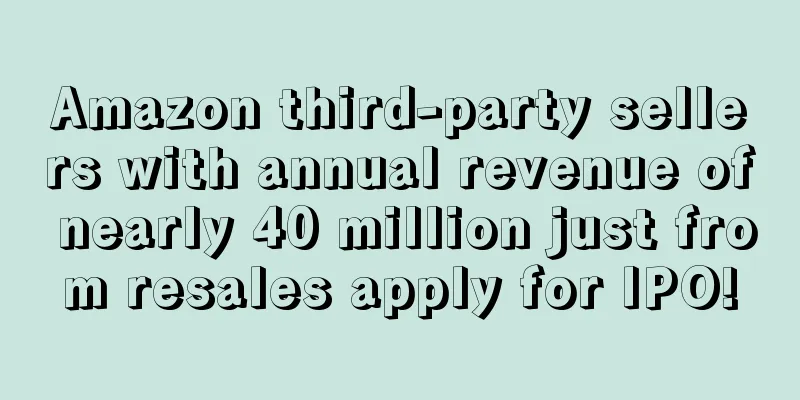2021 "Buy Now, Pay Later" spending increased by 230%, convenient but also risky

|
Last year, supply chain crises, repeated outbreaks, price increases, and labor shortages brought many challenges to retailers' year-end holiday shopping. However, the popularity of the "buy now pay later" service has also helped merchants increase sales.
In the United States alone, BNPL spending increased by 230% in 2021, and this growth trend continued until the holiday shopping season at the end of the year . According to a survey by GoCardless , 42% of consumers who use BNPL for holiday shopping said that because they have experienced two years of epidemic life, they are eager to splurge during the year-end holidays.
BNPL services are popular among young people, with about one in five consumers choosing it as their first choice for payment during holiday shopping, including 22% of Generation Z. According to Afterpay data, the number of Generation Z customers using BNPL increased by 11% during Black Friday and Cyber Monday in 2021 compared to the same period in 2020.
Data shows that when merchants provide BNPL services, it is easier to stimulate consumers' impulse shopping, and consumers will come back as repeat customers. Retailers who cooperate with Klarna to provide BNPL services have increased conversion rates by 30% and order values by 41%. This is very helpful in improving store image and repurchase rate.
On the other hand, financial technology companies with BNPL services, such as PayPal, Klarna, Afterpay and Affirm, allow e-commerce and physical retailers to provide BNPL services to consumers, regardless of their size. However, for each order using BNPL services, these retailers must pay a certain percentage of commission to these financial companies, some as high as 8-10%. Therefore, when merchants choose to join BNPL services, they must also consider their own scale and costs, otherwise the gains will outweigh the losses.
Although BNPL brings a lot of convenience to both merchants and consumers, it can also cause debt crisis for consumers. According to a survey by Credit Karma , 34% of consumers who use BNPL have missed one or more repayments. And some consumers who have maxed out their credit cards will turn to BNPL, which also causes them to fall further into debt crisis.
Consumers who have fallen into debt due to BNPL say they feel overwhelmed without a central way to track their purchases and payments, as they don’t know how much they actually owe and when, which can easily lead to them missing payments.
Despite the risks, BNPL’s popularity continues to grow. According to Juniper Research , consumer spending on BNPL is expected to grow by approximately 274% from 2021 to 2026. BNPL may also represent a permanent shift in the way consumers check out for purchases, whether online or offline. BNPL Buy now, pay later |
<<: Etsy investigates sellers? The authenticity of the email is questioned
>>: The global online market is expected to grow 15% per year
Recommend
What is inspiredhouseholdshop? inspiredhouseholdshop Review, Features
inspiredhouseholdshop's main product categorie...
XTransfer2024 Future Foreign Trade Conference was held, with Wu Xiaobo and other big names making a grand appearance
On August 15, the "2024 Future Foreign Trade...
What is Aden + Anais? Aden + Anais Review, Features
Aden + Anais is a well-known American baby produc...
What is Shopswain? Shopswain Review, Features
Shopswain is a tool that helps Amazon sellers gro...
Temu's market focus will shift! US advertising revenue will drop to 38%
In order to protect its rights, TikTok filed a la...
What is Kogan? Kogan Review, Features
Kogan was founded in 2006 by Ruslan Kogan and is o...
Temu makes another move in Africa, is the e-commerce landscape about to change?
Even though it encountered obstacles in Southeast...
Sales surged 245%! Anti-hair loss products are hot in Korea
It is reported that the domestic market for hair ...
What is Lens Network founder Yang Fan? Lens Network founder Yang Fan Review, Features
Yang Fan graduated from Jilin University in 2007 w...
Nearly 10,000 orders sold in a single day! Domestic brands take off in the Southeast Asian market
In recent years, the global maternal and infant p...
Amazon may force employees to relocate, and those who violate the rules will be required to "voluntarily resign"?
It is understood that Amazon is looking for ways ...
In 2021, Russian e-commerce developed rapidly, with transaction volume increasing by more than 90%!
According to preliminary estimates by Data Insigh...
What is Cross-Boundary? Cross-Boundary Review, Features
Kuagejing is affiliated to Kuagejing (Shenzhen) Te...
Sales of 106.1 billion! Amazon becomes the biggest winner of Black Friday in the United States
The grand Black Friday Cyber Monday shopping sp...
Amazon was punished in India for selling problematic products!
Recently, the Chandigarh Consumer Disputes Redres...









